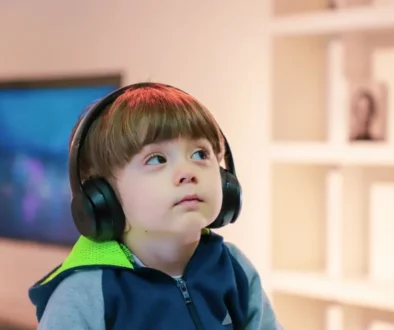A Guide to MeRT Therapy for Autism
About 1 in 36 children is on the autism spectrum disorder in the United States.
Navigating this world can be challenging for parents. But with advancements in therapy options, hope and help are available. One such promising approach is MeRT therapy for autism.
Are you a parent seeking help for your child or someone interested in mental health solutions? This article explains MeRT therapy for autism. It aims to help parents understand how it works and why it’s important in managing autism as a whole.
Keep reading to learn more about how this approach may help autistic individuals.
Understanding MeRT Therapy
MeRT, or Magnetic e-resonance Therapy, is a neuromodulation technique. It uses electromagnetic fields to stimulate and regulate neural activity in the brain. This non-invasive approach targets regions in the brain associated with autism spectrum disorders specifically.
MeRT therapy uses three particular technologies to help with autism:
-
Magnetic Stimulation (rTMS) is a painless treatment that uses pulsed magnetic fields
-
Brain Monitoring (EEG) monitors the brain’s activity and gives information on neural patterns., showing patterns that help understand things better
-
Heart Activity Recording (EKG) checks how the heart is doing by recording its electrical activity
The MeRT Therapy Experience
For parents considering MeRT therapy for their child, knowing what to expect is crucial. This section will guide you through the steps involved in the MeRT therapy process.
Initial Consultation
The process often begins with a consultation in person or via telemedicine.
Expect to provide detailed information about:
-
Developmental history
-
Any observed behaviors
The specialist may use standardized questionnaires or interviews to gather specific details about:
-
Communication skills
-
Social interactions
-
Behavioral patterns
Collaboration With Parents or Caregivers
Parents or caregivers play a vital role in the assessment process. Expect to engage in discussions about:
-
The child’s behavior at home
-
Daily routines
-
Medical history, including any prenatal or perinatal factors
-
Developmental milestones and delays, if applicable
-
Family history
Information about hearing and vision screenings may also be relevant.
Feedback and Discussion
The specialist will provide feedback on their observations and initial findings after the assessment. This is a chance for you to ask questions.
Educate yourself about the autism diagnosis and MeRT. Jot down any questions or concerns you have about the therapy. This will help you gather the necessary information and remember all crucial points during the feedback session.
Take a notebook or use your phone to take down notes. It is overwhelming to deal with that amount of information, and you can revisit your notes as needed.
Depending on the results, the specialist may recommend further evaluations. This can include things such as:
-
Genetic testing
-
Metabolic screenings
-
Neurological assessments
Additionally, recommendations for specific interventions or therapies may also be discussed.
Development of a Treatment Plan
If a diagnosis is reached, the specialist will work with you to develop a personalized autism therapy plan. This can include extra therapeutic and educational support to help your child further develop their potential.
Unveiling the Potential Benefits
Parents often seek therapies with the hope of tangible improvements in their child’s life. In this section, we explore the potential benefits of MeRT therapy for children with autism.
Improved Connectivity
MeRT therapy aims to enhance neural connectivity. It fosters improvements in communication and social skills.
Enhanced Cognitive Function
Some individuals reported improvements in their cognitive abilities. This included attention, memory, and problem-solving skills. MeRT therapy specifically focuses on these areas.
The goal is to help the brain work more efficiently and effectively.
Behavioral Adaptations
Positive changes in behavior were noted. This included a reduction in repetitive actions and an improvement in handling various situations. These changes contributed to smoother social interactions and made daily tasks easier.
Complementary to Other Therapies
MeRT therapy is often used as a complementary approach alongside other traditional interventions. It can be integrated into an extensive treatment plan that may include:
-
Behavioral therapies
-
Speech therapy
-
Occupational therapy
-
Educational interventions
MeRT therapy is non-invasive. This means it does not involve surgery or the use of medications. Many individuals tolerate this well, with minimal side effects reported.
The electromagnetic stimulation used in MeRT therapy is thought to promote neuroplasticity. This is the brain’s ability to reorganize and adapt. This helps the brain create new connections and adjust to different situations.
Anticipating and Navigating Potential Outcomes
Embarking on the MeRT therapy journey can be exciting and challenging for parents.
While MeRT therapy shows promise, it’s essential to approach it with realistic expectations. Each child responds differently, and progress may take time.
Maintain open communication with therapists throughout the process. Your insights and observations are valuable. This helps to tailor the therapy plan to your child’s unique needs.
MeRT therapy is just one piece of the puzzle. Continue to provide holistic support for your child. Incorporate other therapies and educational interventions as long as they are needed.
Preparing Your Child for MeRT Therapy
Preparing your child for MeRT (Magnetic e-resonance Therapy) means you have to take their age and concerns into consideration. Here are some steps to help prepare your child for MeRT:
Explain MeRT therapy in simple, straightforward language. Use terms they can understand and avoid using difficult terms. You can use visual aids like pictures to make the information less intimidating.
Answer their questions honestly and age-appropriately. Remind them that you’ll be there to support them throughout the process.
Visit the treatment facility before the actual sessions begin. This can help reduce anxiety.
Allow your child to bring comfort items, such as a blanket or toy they love, to the therapy sessions. Having familiar items can provide a sense of security.
The Potential of MeRT Therapy for Autism
MeRT therapy for autism is worth exploring if you are looking for solutions to help support your child with autism. This approach may contribute to better mental wellness and behavioral health.
If you’re seeking an evaluation and assessment for your child, Developmental Pediatrics is here to support you. We’ve been serving the people of Texas since 2000. Learn more about our evaluation process and take that first step by contacting us today!



